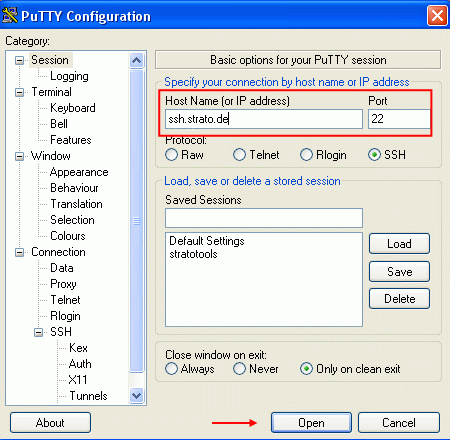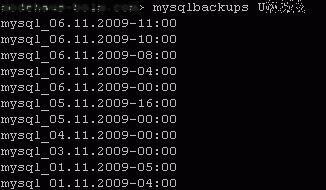This is how easily you can access a backup of your MySQL database via SSH.
Backups are necessary - whether hourly, daily, or weekly. In addition to your files and directories, STRATO also backs up your MySQL databases (starting with version 4.x).
The creation of these backup copies takes place automatically in the background with Backup Control and the intelligent storage architecture.
The MySQL Backup from STRATO will be available to you and allows you to independently access the backup copies of your databases - made at multiple points in the past!
You only need an SSH program to access the backup copies.
After establishing connection via SSH with the free PuTTY program, the mysqlbackups tool is available, which shows you a list of available backups.
In the following, we show you how you can access your database backup files via PuTTY.
Start PuTTY

Please enter ssh.strato.de as your host name.
When the connection to the server has been established, your login name and password will be requested.
Enter a domain from your package as the login name, for example desiredname.com. . Confirm the entry by pressing the [ENTER] key. Enter your master password that you assigned in the customer service area as the password. The password is not displayed during input.

Note: : If you received an error message while logging in through SSH or the PuTTY program window simply closes, please check if you input your access data correctly.
If the data is correct and the login still does not work, please check the SiteGuard settings as well in your password-protected customer service area.

If you have successfully logged in, your domain name will appear in the next line, followed by an "angle bracket", which means that you can execute "commands". Enter the following command after it to call up the MySQL monitor:
| mysqlbackups U123456 |
You will now receive a list with all of the available backups in the form mysql_[DATE]-[TIME].

| mysqldump --add-drop-table -h mysql_[DATE]-[TIME] -u [user name] -p [database name]> [file name].sql |
The command would then be as follows:
| mysqldump --add-drop-table -h mysql_05.11.2009-16:00 -u U012345 -p DB012345> sqlsicherung.sql |
For a sub-folder, usually only the name of the folder is displayed.
In the following article, you will find out how you can now restore the backup: